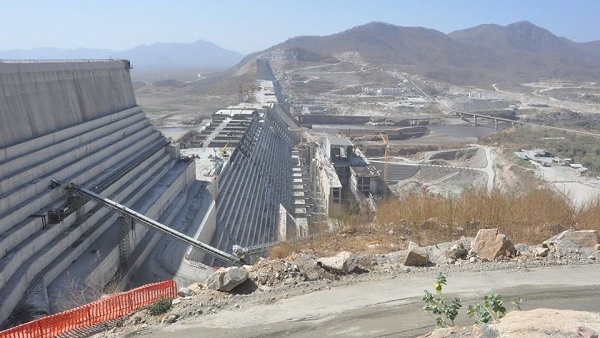
Officials said Ethiopia agreed to an Egyptian demand that the GERD reservoir to be filled over seven years to reduce the effect downstream.
(The National) – Egypt and Ethiopia, long at odds over plans for a huge dam (the Grand Ethiopian Renaissance Dam, GERD) on the Nile, have made some progress towards a resolution by delaying the filling of the connecting reservoir, sources said.
The two countries, with Sudan, wrapped up two days of talks in Cairo on Tuesday (3 December 2109). It was the second of four rounds of negotiations agreed on at a meeting in Washington last month.
Although minor agreements were reached, the nations have yet to iron out differences on how to offset the effects of droughts.
Egypt’s Ministry of Water Resources and Irrigation late on Tuesday said very little about the talks or whether they made progress.
The ministry said only that differences would be further discussed in Khartoum in talks scheduled for 21 and 22 December 2019.
But officials said Ethiopia agreed to an Egyptian demand that the reservoir behind the dam be filled over seven years to reduce the effect downstream.
The Sudanese government said that differences over filling the reservoir, which has a capacity of 74 billion cubic meters, had narrowed.
The officials said Ethiopia also agreed to another key Egyptian demand that it released 40 billion cubic meters of water a year if the rainfall on its highlands, where the Blue Nile originates, is plentiful or above average.
The fourth and final meeting is scheduled for Addis Ababa in early January 2020.
The ministers are also due to meet in Washington on Monday (9 December 2019) to assess progress, and again on 13 January 2020. Failure to reach full agreement by mid-January will lead to the invitation of a fourth party to mediate.
A mainly desert nation of about 100 million people, Egypt says that a significant drop in its share of the Nile water would affect the livelihoods of hundreds of thousands of farmers, thus threatening the country’s food security.
It also wants Ethiopia to show flexibility during droughts.
Continue reading this story at The National
